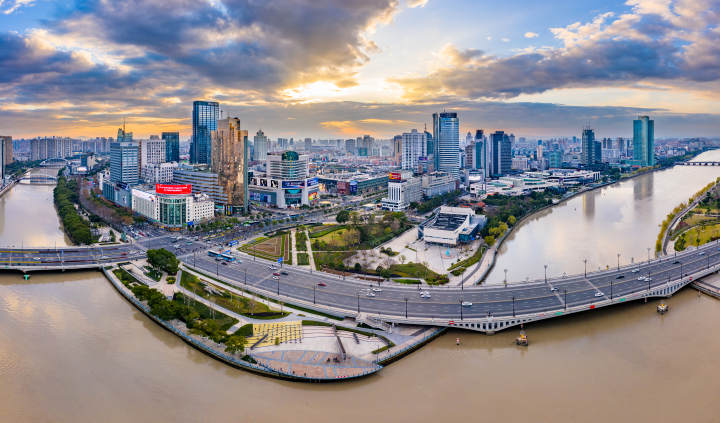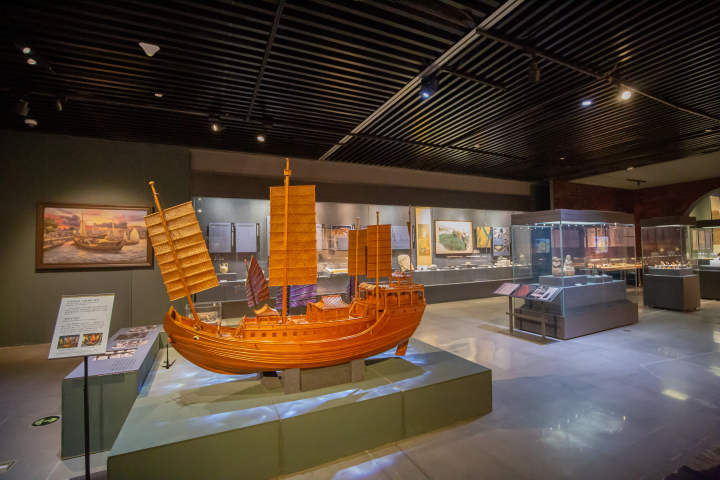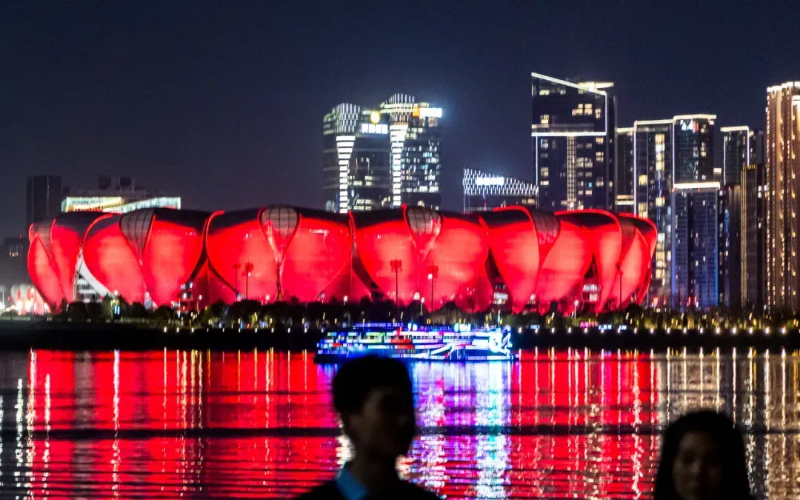Ningbo a prosperous seaport during Song Dynasty
Ningbo city in East China's Zhejiang province was once a dynamic ocean trading hub during the Song Dynasty (960-1279).
Back then, a massive fleet of merchant ships would set off on long voyages from Ningbo's seaport to East Asia, Southeast Asia, Arabian Peninsula, and even as far as the eastern coast of Africa.
The bustling seaport was located in today's Jiangxia subdistrict, which is situated at the confluence of the Yaojiang River, Fenghua River, and Yongjiang River.

Yaojiang River, Fenghua River, and Yongjiang River converges at downtown Ningbo. [Photo/ zj.zjol.com.cn]
Lin Guocong, deputy director of Ningbo Cultural Heritage Administration and Research Institute, said that Jiangxia Park was once packed with merchants, passengers, boatmen, carters, and porters and the numerous freight ships nearby were usually loaded with tea from Zhejiang, Anhui, and other localities around China, celadon made in Yue Kiln in Zhejiang, as well as various kinds of Chinese books.
According to Lin, Jiangxia Park was where one of the few Song Dynasty customs offices used to be located. During the Southern Song Dynasty (1127-1279), the seaport was one of the three largest official foreign trade harbors in the country.
"A highly dynamic seaborne trade during the Song Dynasty was propped up by advanced shipbuilding technologies," Lin said. The fact is reflected in a model of "Wanhu Shenzhou", an exhibit in the city's China Port Museum.
"Wanhu Shenzhou" refers to colossal seagoing vessels that were used only by Song Dynasty envoys who were travelling overseas. Historical records show that two such vessels were made in Ningbo in 1078 and 1123, both of which had sailed to today's South Korea, which was then Song's vassal state.

A model of "Wanhu Shenzhou" is on display in China Port Museum. [Photo/ zj.zjol.com.cn]
Song Dynasty's shipbuilding sector boasted the most advanced manufacturing techniques and the largest production capacity. A sunken Southern Song merchant ship named "Nanhai No 1", which measured 30.4 meters in length, 9.8 meters in width, and 4 meters in height, was discovered offshore in South China's Guangdong province in 1987, and was by far the earliest and largest ocean trade ship ever found in the world.
Its watertight bulkheads represent a major technological breakthrough in ancient times. The sunken ship carries 180,000 articles of cultural relics, including gold vessels, porcelains, ironware, and coins. Many of the objects feature Arabian patterns, suggesting that they were specially manufactured by Song Dynasty artisans for the international market.





 play
play